Original author | @0x Artikal
Compiled by | Odaily Planet Daily ( @OdailyChina )
Translator | Dingdang ( @XiaMiPP )

The content of this article is compiled from two tweets by @0x Artikal and compiled by Odaily Planet Daily. The current market heat continues to heat up. This article attempts to provide readers with the observations and judgments of market participants from the perspective of capital flow and cycle evolution, and listen to the voice of the market. The views in this article are for reference only and do not constitute any investment advice.
Bitcoin broke through its all-time high, reaching $123,000 at one point. This trend caused market divergence: some investors were bullish to $200,000 and believed there was still room for growth; others believed it was close to the top of the cycle and suggested taking profits.
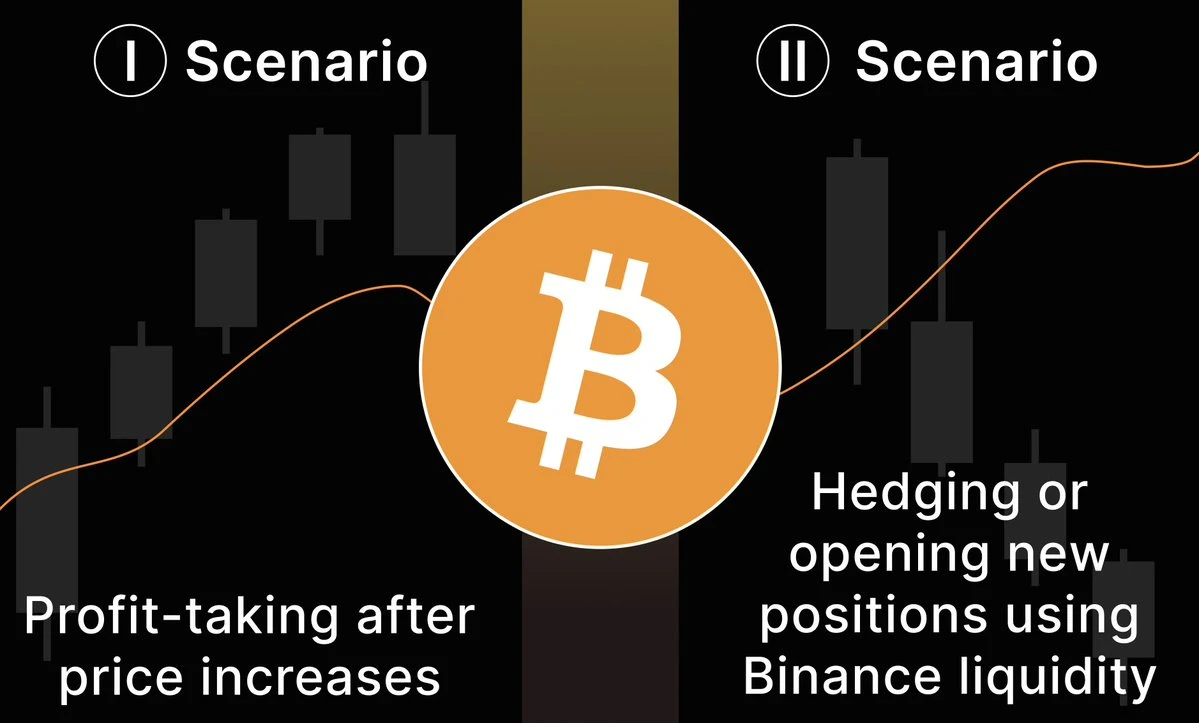
But compared to these market sentiments, what is more worthy of attention is the data itself. Analysis of trading behavior and capital flows shows that the current market is far more complicated than it appears on the surface.
As BTC hits new highs, the behavior of large investors on Binance has changed significantly. The whale activity index has risen sharply, indicating that market sentiment may be shifting. In just one day, more than 1,800 BTC net inflows into Binance, which means that a large amount of funds are flowing to more liquid trading platforms.
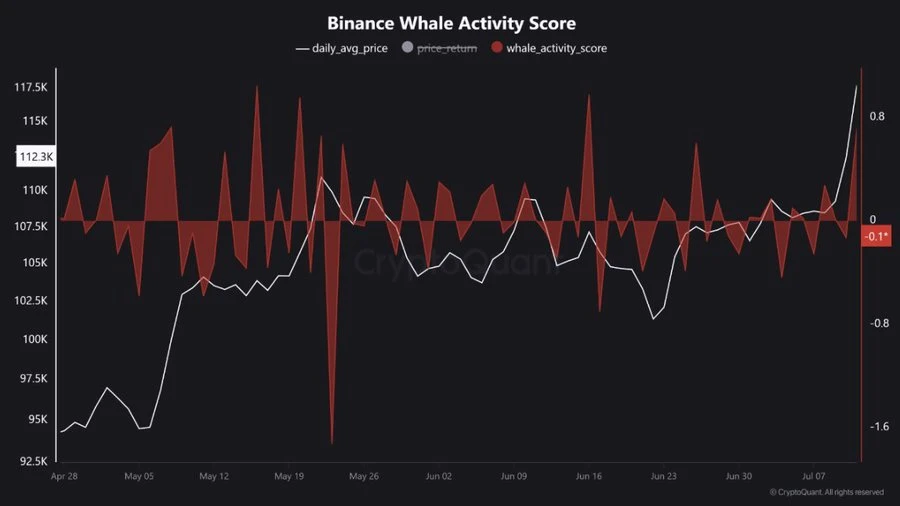
Further observation revealed that more than 35% of these inflows came from single large transactions of more than $1 million, which were obviously not caused by retail investors. A large amount of data showed that this was a collective response behavior of several large investors to the new high, with strong coordination.
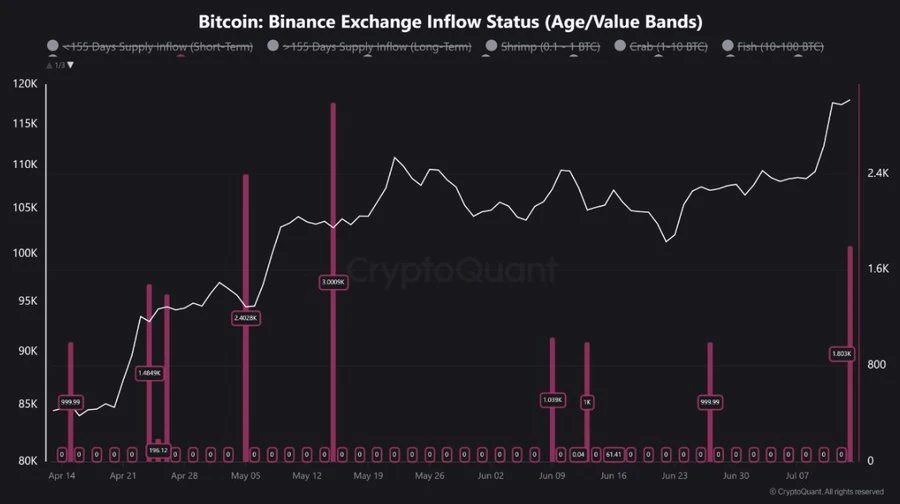
In addition, data shows that most of these transferred coins have been held for less than three months, which is highly speculative. But at the same time, some long-term holders who have held coins for more than a year have transferred their tokens to exchanges, casting a layer of uncertainty on the future direction of the market.
The first is typical profit-taking. Transferring BTC to the exchange immediately after the price hits a new high is likely to mean that investors intend to cash in their gains. This operation is not uncommon, and they tend to lock in profits at high levels and then wait for an opportunity to return to the market. If this trend continues, the market may experience a mild correction in the next few days.
The second possibility is more strategic. The movement of these large amounts of funds may be for risk hedging or to establish leveraged positions using Binances deep liquidity. This means that these large investors may expect market volatility to intensify further and are currently preparing for the next round of market conditions. If this is the case, even if there is a short-term adjustment, its magnitude may be small, and the market is expected to quickly restore balance.
What is more noteworthy is that this wave of capital flows involves both short-term speculators and long-term holders, indicating that it is likely that multiple large participants are executing a certain strategy in sync. In just one day, more than 1,800 BTC were transferred to Binance, which has a significant impact on the platforms short-term liquidity and has significantly increased the markets sensitivity to large orders.
The operations of these whales are likely to be strategic considerations, intended to seize the turning point of the trend. At this critical psychological node, the collective actions of large investors often have an oppressive effect on the emotions of retail investors. As prices hit new highs, market sentiment oscillated violently between excitement and tension, further catalyzing the speculative atmosphere and increasing the probability of short-term fluctuations.
At the same time, Binances overall liquidity is also rising, attracting more institutional traders to enter the market. For these professional players, the ability to quickly open positions and flexibly close positions is particularly important. At this stage, whale behavior almost determines the overall market sentiment and price trends. Therefore, it is particularly important for all investors to closely track the flow of funds, especially the real-time large transfer trends.
Regardless of whether the market chooses to pull back or continue to fluctuate upward, one thing is certain: current volatility is rising and risks are also increasing. Any slight changes in sentiment and liquidity will be reflected in prices almost instantly. The entire market is in an extremely sensitive period, and even a small event may become the fuse that detonates the market.
We have witnessed before that just one big investor’s operation on Binance triggered a new round of Bitcoin breakthroughs. This fully demonstrates that the behavior of big funds has a decisive influence on the shaping of market structure.
For long-term investors, this may not be a signal of clearing out, but more like a test of trend resilience. The large amount of BTC transferred to the exchange is likely just a strategic position adjustment rather than a large-scale withdrawal. Of course, sharp fluctuations in the short term are almost inevitable, and it may also be a window period for reconfiguring assets and optimizing positions.
Right now, the market is in a delicate balance: profit realization and strategic deployment coexist. In the coming days, the movements of large investors on Binance and changes in the overall liquidity environment will continue to dominate the market rhythm. Investors need to remain highly vigilant and be ready to adjust their strategies according to market dynamics.
After all, Bitcoin is still in the spotlight, and its every move still affects the nerves of the entire crypto market.
Note: This tweet was published on July 17, 2025
The evolution path of cyclical market structure
If we look at the typical evolutionary path of past crypto market cycle structures, how do we define where we are now?
While BTC led the price breakthrough, ETH began to show signs of relative strength. Judging from the trend of ETH/BTC, the exchange rate has broken through the range of fluctuations for many months, which is the first signal that the rotation structure has officially started.
Generally speaking, market rotation always follows this path: BTC takes the lead → ETH follows → high-market-cap currencies make up for the rise → eventually leading to a full-scale altcoin season . ETH is outperforming BTC, indicating that market liquidity is flowing from the BTC-dominated structure to the next stage represented by ETH.
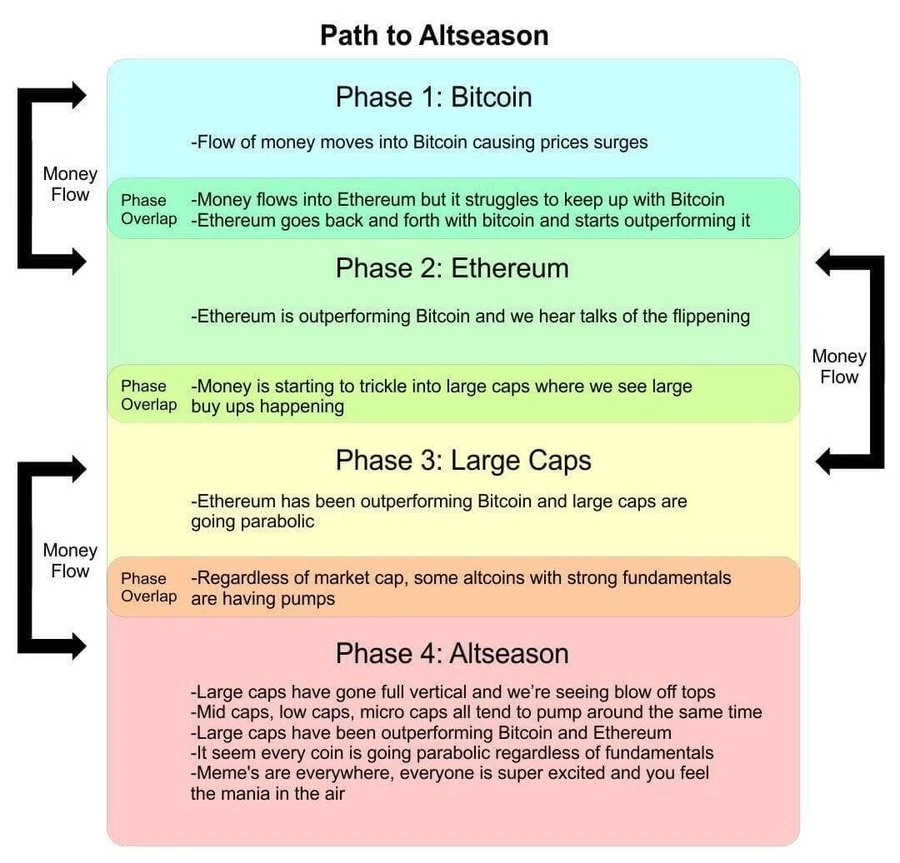
BTC usually launches an offensive first, and when ETH starts to catch up or even performs stronger, it means that a wider range of funds are willing to take higher risks. ETH is not just ETH, it is also a bridge to DeFi and other altcoins. Its strength means the recovery of confidence in the entire market.
After ETH started to gain momentum, high-market-cap projects such as SOL, XRP, and ADA have seen strong buying, and they are usually used as index-type alternative bets after ETH. Once these currencies are launched, funds will continue to flow to medium-market-cap projects below 1 billion, retail investors attention will soar, and market narratives will change day by day. In order to gain higher Beta returns, traders will accelerate the rotation of funds.
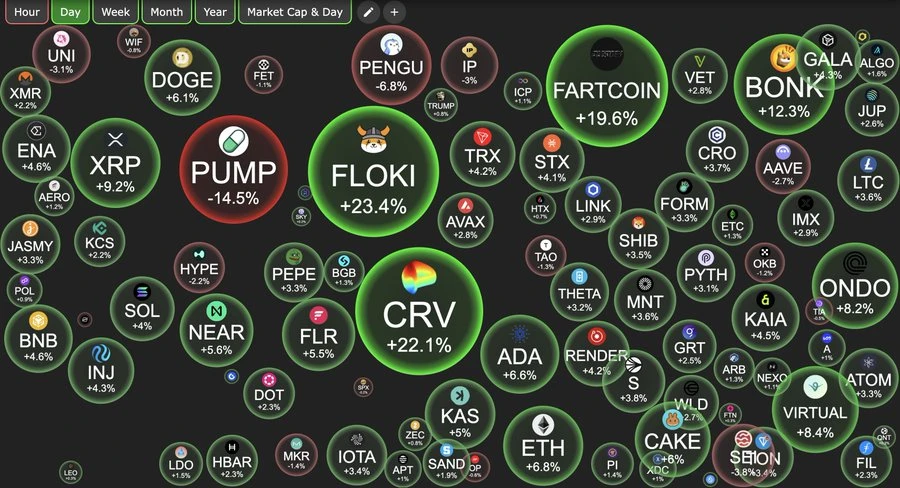
Mining coins (such as DCR) usually start to follow the trend after the mid-cap coins start, at which time the market will enter a highly reflexive state: the more the price rises, the more inflows there are, and the more inflows there are, the faster the price rises. This stage is the most likely breeding ground for Memecoin to explode in a short-term parabolic market.
This whole round of rhythm is essentially a natural chain of liquidity sinking. Starting from BTC leading the rise, funds migrated step by step: ETH, mainstream altcoins, medium-cap coins, and then to Meme and small-cap tokens. In this process, volatility and market acceleration continued to increase.
From a structural point of view, we are standing at the starting point of the ETH stage: rotation is just beginning, it has not yet overheated, and the window of opportunity is still open. The strength of ETH will further push liquidity to continue to migrate downward, while the FOMO sentiment of retail investors has not yet been fully ignited. The fear and greed index remains at 60-65, and there is still some room for extreme emotions. This also means that there is still enough room for this cycle to rise.
The direction of the entire market is very clear: BTC has ignited the fuse, ETH is taking over and accelerating, and high-market-cap tokens will quickly catch up. After that, the real full-scale altcoin season will arrive as scheduled, with mid-market-cap coins, Memecoins and even various concept coins taking turns to perform until all liquidity is exhausted.
ETH’s leading performance is not only a confirmation of the trend, but also the starting point of the next stage.










